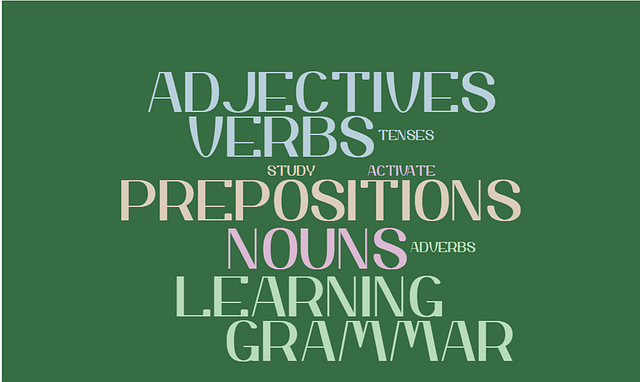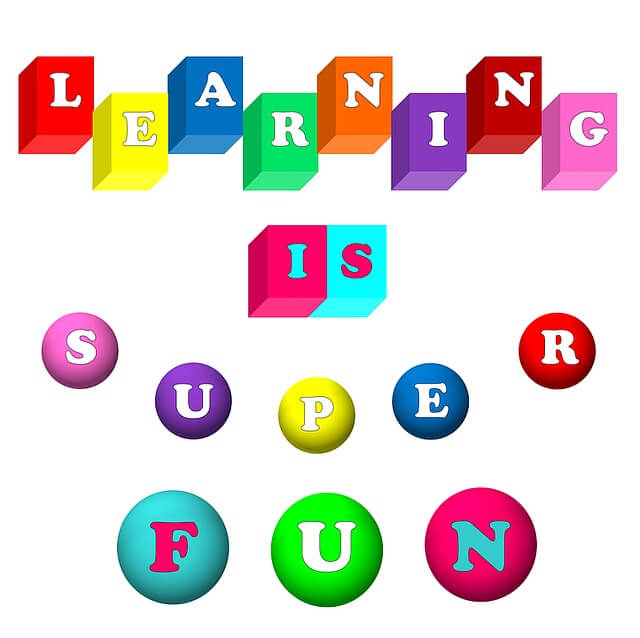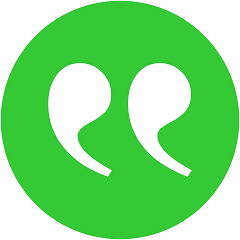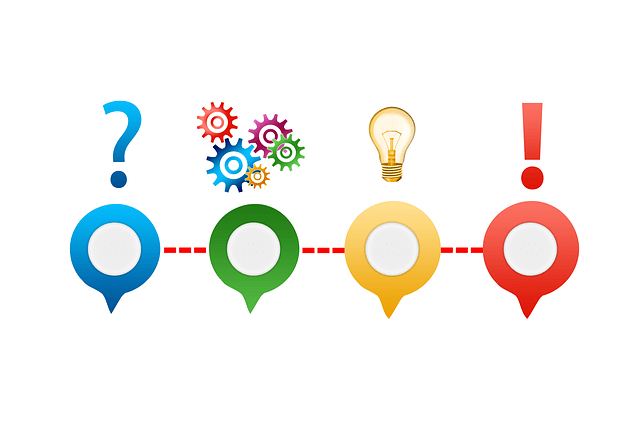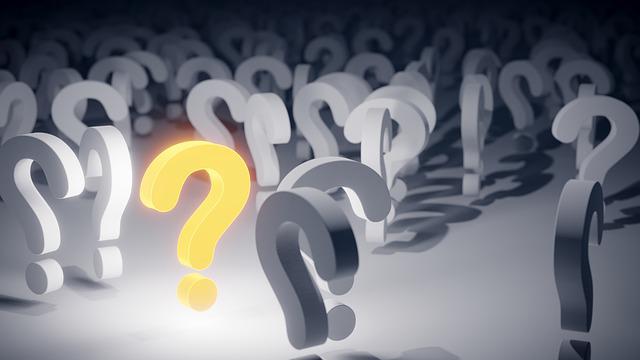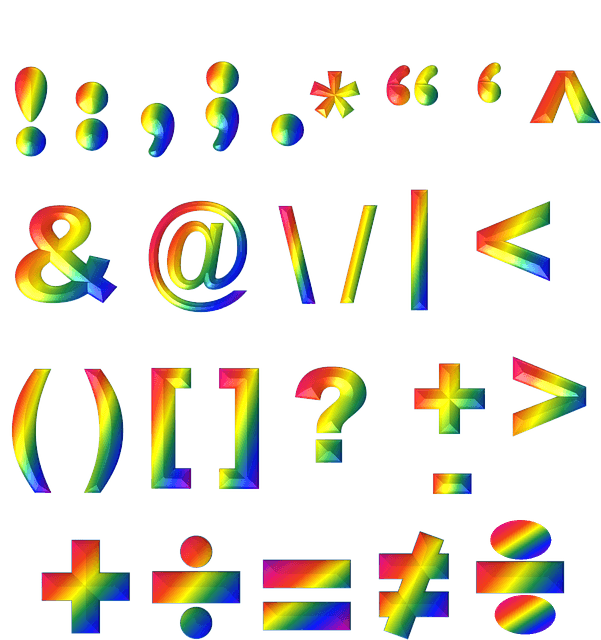english
المقررات الدراسية موسومة بـ "english"
Word Classes
Learn about word classes, identifying them and what they are. This course is ideal for intermediate learners.
Introduction
Identifying word classesWhen we identify what class a word belongs to, we may think about the following:
· The meaning of the word (for example, is it a ‘thing’ or a ‘doing’ word?)
· The form or ‘shape’ of the word (for example, does it have ‘ed’ or ‘tion’ at the end?)
· The position or ‘environment’ of the word in a sentence (the context).
Verbs are ‘action’ or ‘doing’ words. Verbs can take place in the following tenses, the verb used is the word ‘jump’.
· Past tense, for example “we jumped on the wall.”
· Present tense for example, “we jump on the wall.”
· Future tense for example, “we will jump on the wall.”
Nouns are naming words for people, places, things and ideas.
Nouns can be subdivided into different types:
1. Concrete nouns are objects we can smell, taste, touch and see such as chair, table and dog.
2. Abstract nouns are ideas, states and feelings such as, love, honour and hope.
3. Common nouns name types of people, places, things and ideas such as, winter, biscuit and city.
4. Proper nouns name specific people, places, things and ideas such as William Shakespeare, Cardiff and Batman.
Pronouns are words that replace nouns (the name of a person or an object) when it is already clear whom or what you are talking about.
For example:
Jane has broken her leg. She’ll not be able to play football today.
In the second sentence, she means Jane.
You will learn
- Word classes
- Identifying word classes
- Verbs
- Nouns and pronouns
- Adjectives
- Adverbs
- Prepositions
- Conjunctions
Verbs
Learn about verbs and how theyare used.This course is ideal for intermediate learners.
Introduction
Verbs are ‘action’ or ‘doing’ words.Verbs are words that describe an action or talk about something that happens. They take many different forms depending on their subjects, the time they refer to and other ideas we want to express.Here are some examples of verbs in sentences:
· She runs to catch the train. (The verb is ‘runs’)
· David sings in the choir. (The verb is ‘sings’)
· We walked five miles to a garage. (The verb is ‘walked’)
· I cooked a meal for the family. (The verb is ‘cooked’)
You will learn
- Verbs
- Tenses
- Verb endings
- Common irregular verbs
Understanding Essay Titles
Learn about understanding essay titles and how to do so. This course is ideal for intermediate learners.
Introduction
Essay titles contain clues which show you what the examiner or marker is looking for. In this session we will be learning what those clues are and how to look out for them.These clues include:
· Topic or content words which are words or phrases that tell you the main subject of the essay
· Limiting or focus words which are words that tell you which aspects of the subject you should write about
· Direction words which are words that tell you what you need to do
You will learn
- Understanding essay titles
- Analysing essay titles
- Picking apart the title
- Focusing on the title
- Making notes
- Using the title
- Key words in titles
Essay Writing Process
Learn about the essay writing process and how to successfully and effectively use it. This course is ideal for intermediate learners.
Introduction
The essay writing process consists of 6 parts that lead on from one another:1. Analysing the question
2. Generating Ideas
3. Research
4. Planning
5. Drafting
6. Editing
Analysing an essay title has 4 stages:
1. Pick apart the title. Look for:
a. Topic or content words or phrases that tell you the main subject of the essay
b. Limiting or focus words that tell you which aspects of the subject you should write about
c. Direction words that tell you what you need to do
2. Focus on the title
3. Make notes – write down any questions that are prompted by the title
4. Use the title – keep checking the exact wording and refer to the essay title in your introduction and conclusion
You will learn
- The process
- Analysing the question
- Generating ideas
- Research
- Planning
- Drafting
- Editing
Summarising
Learn about summarising and what it is. This course is ideal for intermediate learners.
Introduction
Summarising involves taking the main ideas from a piece of text and rewriting them in your own words.
A summary tends to give an overview of a topic area. It should not contain unnecessary detail or be written like an essay.
Summarising is an important skill that is often used when researching, gathering or presenting information. Being able to write a good summary demonstrates that you have fully understood the text you are reading.
You will learn
- What summarising is
- Writing a summary
- Checklist
- Example summary
Spelling
Learn about why spelling is important and information on spelling. This course is ideal for intermediate learners.
Introduction
Knowledge of spelling and grammar will support you to correctly arrange words in sentences and add the correct punctuation. This will allow you to communicate efficiently with other people, your ability to spell, punctuate and produce grammatically- correct sentences in assessment is important.
· You are marked on your spelling· It aids communication
· It avoids confusion
· It helps you understand the patterns of language
· It helps you understand the connection between letter combinations and sounds which will help your reading
Can’t I just use a spell checker?
A spell checker such as (google translate) is only useful if you start the word correctly, getting most of the letters right.
It will not correct another legitimate word, for example, if you mis-type ‘does’ as ‘dose’ the spell checker will not pick this up.
A spell checker will not help if you are writing by hand.
You will learn
- Why spelling is important
- Commonly misspelled words
- Spelling strategy (look, cover, say, write and check)
- Homophones
- Silent letters
Quotation Marks
Learn about quotation marks and why and when you should use them. This course is ideal for intermediate learners.
Introduction
Quotation marks can also be referred to as:· Speech marks
· Inverted commas
Question marks can be single or double.
They always come in pairs – open quotation marks and close quotation marks.
Quoting means repeating exactly what someone has said or written.
Whenever you use a quotation you must use quotation marks. This is important as it shows the words are not your own (and will stop you being accused of plagiarising).
You will learn
- Quotation marks
- Why you should use quotation marks
- Using single and double quotation marks
- Use of quotation marks
Question and Exclamation Marks
Learn about question marks and exclamation marks and when they are used. This course is ideal for intermediate learners.
Introduction
Question marks and exclamation marks can be used instead of a full stop at the end of a sentence.Every sentence must end with one of the following:
· A full stop
· A question mark
· An exclamation mark
The question mark is used to indicate a question or query.
It should be used at the end of the following:
· Direct questions, for example: How much is that? (There is a question mark at the end)
· Tag questions, for example: You’re lost, aren’t you? (There is a question mark at the end)
You will learn
- Ending sentences
- Question marks
- Exclamation marks
Punctuation
Learn about punctuation and all the different punctuation marks. This course is ideal for intermediate learners.
Introduction
Capital letters are used for a number of different purposes which are the following:· At the beginning of a sentence. For example: The dog barked loudly (the capital letter is at the beginning of the word ‘the’).
· For the personal pronoun ‘I’. For example: Yesterday, I went the zoo (the capital letter has been used the for the word ‘I’).
· For proper nouns (specific names of people, places and things). For example: Rashid went to Paris in April (the words Rashid, Paris and April all have capital letters at the beginning).
Full stops are used in the following ways:
· To mark the end of a sentence. The full stop marks the end of the sentence, unless a question mark or exclamation mark is being used instead.
· To indicate an abbreviation. For example: 6 a.m. (The full stop is used between the ‘a’ and ‘m’ and after the ‘m’.
· For ellipsis (three dots at the end). For example:
o As Shakespeare said, “If music be the food of love …” (The ellipsis is at the end).
o “You know how I feel about that…” (The ellipsis is at the end).
You will learn
- Capital letters
- Full stops
- Commas
- Apostrophes
- Question marks
- Exclamation marks
- Colons
- Semi-colons
- Quotation marks
- Hyphens
- Dashes
- Parentheses
- Brackets
Prepositions
Learn about prepositions, what it is and examples. This course is ideal for intermediate learners.
Introduction
Prepositions can be used to indicate time.The mostly commonly used prepositions of time are at, on and in.
These are used in the following ways:
· At is used to indicate specific times for example, the train is due at 11.45 p.m.
· On is used to indicate days and dates for example, my mother is coming on Monday.
· In is used to indicate nonspecific times (during a day, month, season or year, for example, he likes to play in the morning.
Prepositions of place, some locations do not require a preposition, including:· Downstairs
· Downtown
· Inside
· Outside
· Upstairs
You will learn
- What a preposition is
- Preposition of time
- Prepositions of place
- Preposition positions
Planning a Speech
Introduction
A good speech needs a good structure. In your speech introduction you should:· Define your key terms (if needed)
· Give a general overview
· Provide a tentative conclusion, so your audience knows where the speech is going
Say something at the outset that will make them sit up and listen to you – because you are saying something interesting and you have an interesting way of saying it.
A good speech needs a good structure.Just like an essay, a speech needs a beginning, middle and end.
Your audience won’t be able to remember every single thing you say, but you need to make sure they remember your key message.
A useful way to do this is:
· Opening - tell them what you are going to tell them
· Main content - tell them
· Closing - tell them what you told them
You will learn
- Structing your speech
- Introduction
- Main body
- Conclusion
- Audio and visual aids
- Tips for using visual aids
- Principles of using audio and visual aids
Paragraphs
Learn about paragraphs and how and when to use them correctly. This course is ideal for intermediate learners.
Introduction
A paragraph is a group of related sentences that develops one main idea, which is the topic of the paragraph.A paragraph is like a sandwich. The topic and concluding sentences are the two pieces of ‘bread’ enclosing the ‘meat’ in the supporting sentences.
The elements of a paragraph differ according to topic and purpose. Introductory paragraphs often contain definitions, while descriptive paragraphs include a lot of information. Other sentences may give examples, reasons and restatements.
3 of 13 – When to start a new paragraph
To remember when to start a new paragraph, use the TIPTOP rule which is, you move onto a new paragraph when you change the following:
- Time
- Place
- Topic
- Person
You will learn
- Organising paragraphs
- When to start a new paragraph
- Paragraph structure
- Paragraph content
- Unity in paragraphs
Nouns and Pronouns
Learn about nouns and pronouns and the different types. This course is ideal for intermediate learners.
Introduction
Nouns are naming words for people, places, things and ideas.They are divided into two subsections:
1. Concrete nouns are objects we can smell, taste, touch and see such as chair, table, dog and pen.
2. Abstract nouns are ideas, states and feelings such as love, hope, honour and clarity.
Nouns can also be sub-divided into proper and common nouns.
A proper noun has two distinctive features that make it different to a common noun:
1. It will name a specific item.
2. It will begin with a capital letter no matter where it occurs in the sentence.
Pronouns are words that replace the name of a person or an object when it is already clear whom or what you are talking about.Example: “Jane has broken her leg. She’ll not be able to play football for weeks.”
You will learn
- Nouns
- Concrete nouns
- Abstract nouns
- Proper nouns
- Common nouns
- Pronouns
Essay Structure
Learn about essay structure how to use it. This course is ideal for intermediate learners.
Introduction
All essays should have three parts:
- Introduction
- Main body
- Conclusion
A good essays introduction should:
● Tell the reader how you are going to answer the question
● Define or explain any specialist terms in the essay title
● Set the scene for the rest of the essay
● Give a brief outline of the key issues or points you are going to cover in the essay, in the order you are going to cover them
● Grab the reader’s interest so they want to read more
You will learn
- Essay structure
- Introductions
- Main body
- Paragraph structure
- Conclusions
Hyphens and Dashes
Learn about hyphens and dashes and how and when they can be used. This course is ideal for intermediate learners.
Introduction
Hyphens are used for the following:· To link compound words and numbers. For example: Well-being (the hyphen is after the word ‘well’) and fifty-one (the hyphen is after the word ‘fifty’).
· To clarify words that use prefixes. For example: Re-covering (the hyphen is after the ‘re’) and self-taught (the hyphen is after the word ‘self’).
· To write fractions. For example: Two-fifths (the hyphen is after the word ‘two) and one-half (the hyphen is after the word ‘one’)
Dashes are used in the following ways:
· To add comments as part of informal writing. For example: “I might get an ‘A’ grade – you never know.” (The dash is after the word ‘grade’). Note that brackets should be used instead of dashes in formal writing.
· Indicate a range. For example:
o It will take 3-6 days to complete. (The dash is between the 3 and 6).
o To gain a merit you need a mark of 60-70%. (The dash is between the 60 and 70).
You will learn
- Using hyphens to link compound words and numbers
- Using hyphens to clarify words that use prefixes
- Using hyphens to write fractions
- Using dashes to add comments as part of informal writing
- Using dashes to indicate range
Express Fact and Opinion
Learn about fact and opinion and how they are used. This course is ideal for intermediate learners.
Introduction
A fact is a piece of information that can be proven to be trueNote:A false fact is a piece of information that is presented in a factual way, but which can be proven to be inaccurate.
An opinion is a person’s subjective viewpoint. Because it cannot be verified as a fact it is an opinion. Once it is verified it is no longer an opinion but a fact.
One way to distinguish between fact and opinion is to look at the language used.
Language helps us to decide whether a statement can be backed up with evidence and verified in some way, or if the statement is someone’s opinion.
Examples of the language we use to express facts are:
· This review has demonstrated
· According to the results of the latest poll …
· The latest findings confirm …
· Researchers have recently discovered …
Examples of the language we use to express opinions:
· The company claims that …
· The research team argues that …
· In Professor Donald’s view …
Most experts in this field suspect that …
You will learn
- Fact and opinion
- Language used to express fact and opinion
- Misleading facts
- Bias
- Blending fact and opinion
Conjunctions
Learn about conjunctions and the different types. This course is ideal for intermediate learners.
Introduction
Conjunctions connect and relate ideas in:· Words
· Phrases
· Sentences
They assist in the logical flow of ideas as they signal the relationship between these ideas.
Coordinating conjunctions
The most commonly used conjunctions are:
· And
· But
· Or
These are called coordinating conjunctions.
Co-ordinating conjunctions join two ideas of equal value in a sentence.
It does not matter which way round the ideas are presented.
You could say “it is cold and wet today” or “it is wet and cold today”.
It does not affect the meaning of the sentence.
You will learn
- What a conjunction is
- Coordinating conjunctions
- Subordinating conjunctions
- Conjunction positions
Colons and Semi-colons
Learn about colons and semi-colons and when they can be used. This course is ideal for intermediate learners.
Intoduction
A semi-colon is a comma and then a dot vertically above it.
Colons
A colon is used:
· To introduce items in a list. For example, he’d lost everything: his friends, his happiness and his pride. (The colon is after the word ‘everything’.)
· Between a statement and an explanation of the statement For example, this time he’d win: he couldn't afford to lose. (The colon is after the word ‘win’.)
· To introduce speech. For example, she grabbed the microphone and asked: “Is there a doctor in the house?” (There is a colon after the word ‘asked’.)
Semi-colons
A semi-colon can be used:
· To join phrases and sentences that are thematically linked (without having to use a conjunction such as ‘and’ or ‘but’). For example, I like your brother; he's a good friend. (The semi-colon is after the word ‘brother’.)
· To punctuate lists of long items. Items in lists are usually separated with commas. However, if the list items themselves contain commas, then semicolons can be used as separators. For example, I have been to Newcastle, Carlisle, and York in the North; Bristol, Exeter, and Portsmouth in the South; and Cromer, Norwich, and Lincoln in the East. (The semi-colon is used after the words ‘north’ and ‘south’.)
You will learn
- Using colons to introduce items in a list
- Using colons between a statement and an explanation of the statement
- Using colons to introduce speech
- Using semi-colons to join phrases that are thematically linked
- Using semi-colons to punctuation long losts of items
Capital Letters and Full Stops
Learn about capital letters and full stops and how and when to use them. This course is ideal for intermediate learners.
Introduction
Capital lettersCapital letters are used for a number of different purposes, which include the following:
· At the beginning of a sentence. For example: The dog barked loudly. (The capital letter is at the beginning of the word ‘the’).
· For the personal pronoun ‘I’. For example: Yesterday, I went to the zoo. (The capital letter has been used the for the word ‘I’).
· For proper nouns (specific names of people, places and things). For example: Rashid went to Paris in April. (The words Rashid, Paris and April all have capital letters at the beginning).
Full stops
The most common way that a full stop is used is to mark the end of a sentence.
The full stop marks the end of the sentence, unless a question mark or exclamation mark is being used instead.
Sometimes a sentence is made up a of a single word, such as for a greeting or command. Even a one word sentence still needs a full stop at the end.
You will learn
- Capital letters at the beginning of a sentence
- Capital letters for the personal pronoun 'I'
- Capital letters for proper nouns
- Full stops to mark the end of a sentence
- Full stops to indicate an abbreviation
- Full stops for ellipsis
- Comma splices
Brackets and Parentheses
Learn about brackets and parentheses and how and when they can be used. This course is ideal for intermediate learners.
Introduction
ParenthesesParentheses refers to round brackets
Round brackets are used in a similar way to commas when we want to add extra information to a sentence.
The following sentences have round brackets:
I visited Kathmandu (which was full of tourists) on my way to the Himalayas. (The parentheses are around the phrase ‘which was full of tourists’.)
The government's education report (April 2005) shows that the level of literacy is rising in nearly all areas. (The parentheses are around the phrase ‘April 2005’.)
The sentences still make sense without the brackets and read as follows:
I visited Kathmandu on my way to the Himalayas.
The government's education report shows that the level of literacy is rising in nearly all areas.
Brackets
Brackets refers to square brackets [ ] and can be used to do the following:
To clarify a point in a quote
• Brackets can be used in a direct quote to clarify a point by inserting additional information.
• For example, Hedy Lamarr once said: "Most people save all their lives and leave it [their money] to somebody else." (The brackets are around the phrase ‘their money’.)
To replace words in a quote
• Brackets can be used to replace words in a quote without changing the original meaning of the sentence.
• For example, Alice Cooper famously said that "from the moment [he] leave[s] [his] house or hotel room, the public owns [him]." (The brackets are around the words he, the ‘s’ at the end of the word ‘leave’, ‘his’ and ‘him’.)
You will learn
- Using parentheses to add extra information to a sentence
- Using parentheses to indicate options
- Using parentheses to list using letters
- Using brackets to clarify a point in a quote
- Using brackets to replace words in a quote


